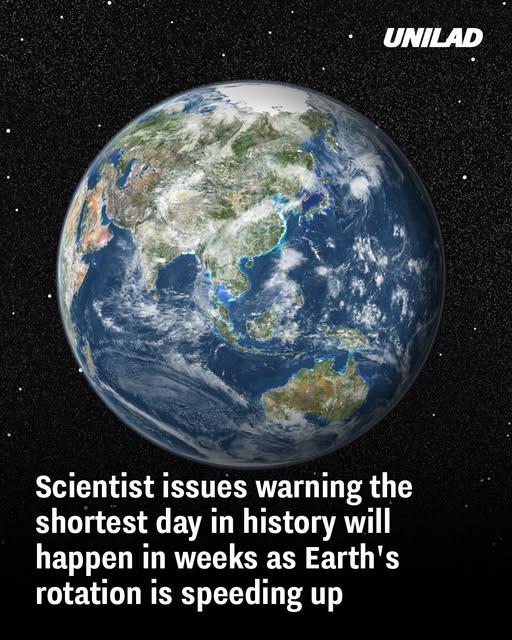Earth’s rotation has been slightly accelerating, causing the days to shorten by mere milliseconds. This summer and spring scientist expect more notably shorter days. Find out more in the article below.
Record‑Short Days Coming This Summer
Based on data from the International Earth Rotation and Reference Systems Service (IERS) and the U.S. Naval Observatory, three days in 2025—July 9, July 22, and August 5—are predicted to be the shortest on record . Models estimate that August 5 could be about 1.51 ms shorter than the average 24-hour day, while previous records logged 1.66 ms on July 5, 2024. Although such differences are undetectable in daily life, they are vital for timekeeping systems that rely on precision, including global navigation networks and scientific research clocks.

Why Is This Happening?
Scientists remain puzzled about the cause of this acceleration. Some experts, like Leonid Zotov of Moscow State University, suggest that internal shifts within Earth—such as core movements—are the culprit. Atmospheric or oceanic changes appear insufficient to explain the trend . Others note that transient events, such as powerful earthquakes, can redistribute mass and affect rotational inertia. For instance, the 2011 Japan earthquake slightly shifted Earth’s axis and shaved microseconds off a day.
Leap Seconds and Negative Time Adjustments
Historically, as Earth’s rotation slowed, leap seconds were periodically added to clocks to align civil time with astronomical time. However, with Earth now spinning faster, the reverse situation has arisen: scientists may need to subtract a second—a so-called negative leap second—possibly as soon as 2029. This would mark the first time in history such an adjustment is made. Although essential for fields requiring ultra-precise timing, it poses challenges for computer systems that may not handle backward time shifts smoothly.
Historical Context: Days Through the Ages
Day length hasn’t always been 24 hours. During the time of the dinosaurs—around 200 million years ago—each day was closer to 23 hours. Atomic clocks, however, allow scientists to detect tiny millisecond-scale variations . Long-term trends indicate that while Earth’s rotation is expected to continue slowing overall due to tidal friction, short-term accelerations like this can—and do—occur .
What This Means for Us
For the average person, nothing will feel different. A 1.5-millisecond shift is imperceptible. But for systems relying on precise, synchronized time—like GPS satellites, stock markets, scientific experiments, and telecommunications—even such tiny discrepancies matter. That’s why organizations like IERS and the U.S. Naval Observatory monitor Earth’s rotation daily.
Looking Ahead: Continuing the Watch
Experts emphasize that this speeding trend is temporary and doesn’t signal a permanent acceleration of Earth’s rotation. Eventually, natural tidal forces—especially the Moon’s—will likely resume slowing us down . Still, researchers will continue closely monitoring rotation patterns throughout 2025 and beyond. If days remain consistently shorter and future records are broken, it will strengthen the case for implementing the first-ever negative leap second.

In Summary
- Since 2020, Earth’s spin has unexpectedly accelerated, shortening days by milliseconds.
- July 9, July 22, and August 5, 2025, are forecast to have the shortest days of the year.
- Causes are unclear, but likely involve internal mass distribution shifts.
- A historic negative leap second may be needed to keep our clocks in sync with Earth’s rotation.
- Though academically intriguing, everyday life won’t be affected—but precision systems rely on these adjustments.

















